Cold plunging at home has never been easier. Why? Because there are simply so many ways to set it up to suit your needs, regardless of whether you only have a shower or bathtub, a small balcony, or a small garden. In this comprehensive article, we’ll show you lots of quick and easy ways to create your own cold plunge at home, whether it’s a store-bought or DIY solution.
Table of Contents
Ice Barrels & Rain Barrels
A very good option for cold plunging at home is to use a rain barrel or a barrel, e.g., on your balcony or in the garden. The water can either be fed into the barrel via the drainpipe of a rain gutter or via a water connection. The outdoor water connection should have a volume compensator so that it does not freeze over in winter, and you run the risk of your water pipe bursting.
Materials for the Rain Barrel / Ice Barrel: Plastic Vs. Wood
Most rain barrels or ice barrels are made of plastic, predominantly polyethylene (PE) or polypropylene (PP). There are also barrels made of wood. These are usually made of oak, but some are also made of acacia or robinia wood. Some people like the look of wood better than plastic, and it is also a good eye-catcher for the garden. However, there are also beautiful imitation barrique barrels made of PE or PP.
When choosing a wooden barrel, you should make sure that it is made of the hardest possible wood, such as oak. Wood is a natural material and “works” accordingly. Hard wood has the property of swelling or swelling less quickly than soft wood. This has advantages if the wooden barrel is left empty for a while and then refilled. Basically, a plastic rain barrel is easier to care for and cheaper than a wooden barrel. Nevertheless, a wooden barrel has a beautiful appearance, and many cold plungers would rather have natural materials in their garden than plastic barrels. The wooden barrel also has the disadvantage that it weighs approximately. 100 kg when empty. This means that it cannot be easily moved around, but should remain in a fixed place. If you have one, however, it is a stylish accessory for any garden.
And here you can see a few of our users taking a cold plunge in their gardens or balconies in various rain barrels.


Advantages and Disadvantages of Rain / Ice Barrels
Advantages
- Natural, outdoor feel
- Inexpensive to purchase
- Space-saving for balconies/gardens
- Usable year-round
- Low water and energy costs
- Convenient & always close to your home
Disadvantages
- Requires a ladder or stool to enter
- Some tinkering is needed for the water connection
Inflatable Ice Bath Tubs
Inflatable ice bath tubs are very popular, and many users buy one for their garden, balcony, or to take with them, because cold plunging is especially nice when you can change locations.
The inflatable ice buoys are super easy and quick to set up and require no special knowledge. It shouldn’t take longer than 5 minutes. The ring is inflated with a small hand pump, so you can also place your arms on it, for example.
These inflatable tubs are also very space-saving, firstly because they are smaller than fixed tubs and secondly because you can simply fold them up when you don’t need them and put them in the cellar. Most inflatable tubs are available in sizes 75cm x 75cm and upwards. As you can see in the photo below, there is enough space to sit in a 75 x 75 tub. The tubs are also insulated, so they can retain the cold a little longer.

You can buy our Chief Ice Officer ice bath tub below, with all the accessories you can think of included. The ice tub is triple insulated and comes with two lids, a pump, a patch kit, a carry bag, and a fashionable design. It has a top price-performance ratio and is one of our most popular bestsellers. The tub can is suitable for all sizes and has a diameter of 80 cm.
And there are also larger inflatable tubs that fit more than one person or are suitable for stretching out your legs. In the smaller tubs, only one squatting position is possible. Oval, elongated tubs are therefore more suitable for very tall ice bathers. These are also very light and better insulated, as both the outer wall and the lid are fully inflated and therefore keep the water cold for a longer period of time.
Advantages and Disadvantages of Inflatable Ice Bath Tubs
Advantages
- Quick setup with no expertise needed
- Very affordable
- Compact, easy to store
- Portable (ideal for travel)
- Comfortable for most body sizes
- Insulated to keep water cold longer
Disadvantages
Durability is limited compared to solid tubs
Cooling Your Cold Plunge in Summer
There are various ways to cool the ice bath in warm temperatures. Here are some popular options we have put together, with the advantages and disadvantages of cold plunging in summer.
Continuous flow cooler
These are very popular and allow the ice bath to be cooled down quickly and easily at higher temperatures. The principle is a pump that draws the water from a (usually) random container and pumps it back into the pool through a flow-through cooler. This is very efficient and also relatively inexpensive.
Professional cold pools
Cold pools are also a good method; they cool quickly and have a built-in water purification system. However, they tend to be priced in the upper range. However, they are visually more attractive and are often suitable for outdoor installation.
We have also written an article on the subject of chill tubs. Chill tubs are professional cooling pools with a great design, robust cooling machines, remote control via app, and a professional water filter using ozone and particle filters.

Converted Freezer
Freezers or chest freezers are very well suited for cold plunges at home. As they are insulated by nature, the cold is stored for a very long time. Freezers and chest freezers come in all different sizes, and many appliances have dimensions that can easily accommodate an adult lying down (see the picture of Joe below). However, you don’t really need a freezer of this size, as you can see below, much smaller freezers are also very suitable.


The water in a freezer can be cooled directly, so no additional effort is required, such as adding ice. The appliances can be kept at the right temperature all year round, they are flexible in terms of time, and very convenient to use. The amount of energy required to cool a small chest freezer to below 5 °C is very manageable. In our large test, the freezer requires less than 100 watts of power consumption and a total of approximately. 1 kWh to cool down, which corresponds to around EUR 0.35 at current electricity prices.
We have written a great guide on how to customize your freezer yourself, from size to energy consumption. Here you can find more information on how to use a freezer for cold plunging.
Advantages and Disadvantages of Freezers for Cold Plunging
Advantages
- Very well insulated by nature
- Can be easily tempered down
- Stable setup
- Manageable energy costs
- Suitable for every body size
- Can be installed indoors and outdoors
- Programmable in terms of time and temperature
Disadvantages
- No mobility
- Somewhat bulky and space-consuming
- With (little) tinkering involved
Cold Plunging In the Bathtub
Almost everyone has a bathtub at home and can use it for cold plunging. This is certainly one of the most pragmatic ways of practising ice cold plunging in your familiar surroundings. In principle, you only need two components: Water in liquid and frozen form. Tap water has a temperature of around 15 °C, so you need to cool it down a little with ice.
Filling Quantities of Ice and Water for Your Ice Bathtub
Bathtubs have approximately the following capacities:
Small bathtub – approx. 200 liters
Medium bathtub – approx. 250 liters
Large bathtub – approx. 300 liters
A good guideline is to fill the tub about 3/4 full with cold tap water and 1/4 full with ice. And of course, the bath does not have to be full to the brim. For a medium-sized bathtub, for example, about half of the total filling quantity is enough, i.e., 125 liters, which is made up of about 95 liters of cold tap water and about 30 kilos of ice. This gives you a good mix that brings you very close to the ice bath temperature of 5 °C. Depending on whether you want it even colder, you can, of course, play with the ice/water ratio. You can find a complete overview of how to cool your cold plunge in summer here.
Below you can see a few examples of bathtubs filled with large ice blocks and ice cubes. The large ice blocks take longer to release the cold, but it is easier to produce them in the freezer at home. The smaller ice cubes release the cold into the surrounding water within 15 minutes, so you can get in quickly and have a good cold stimulus.


Advantages and Disadvantages of Freezers for Cold Plunging
Advantages
- In many cases, already present in the house or apartment
- Inexpensive, as no additional purchases are necessary
- Fresh water inlet and outlet
- Large enough for full-body bathing
Disadvantages
- No mobility
- Limited possibility to cool the water (only with ice)
- No nature experience
Cold Plunging In the IBC Tank
An IBC (Intermediate Bulk Container) tank or IBC container is a lattice tank, a so-called intermediate bulk container, which is often used in industry for the transportation and storage of mostly liquid substances such as chemicals, foodstuffs, or pharmaceutical products. The shape is rectangular with a capacity of 300-1,000 liters. Of course, this should not stop you from setting up an IBC tank in your garden at home, as these containers are also available for private individuals. And there are now countless DIY instructions on the internet for converting an IBC container into an (ice) basin. Rebekka Lütke-Frauer from our community has also created what she calls her little “feel-good oasis”. The IBC container is right next to the house. In winter, the water cools down to a pleasant cold plunge temperature without any additional help, and it even fits two people at the same time.

The most common IBC containers are the 1 square meter versions, which fit exactly on a Euro pallet with a base area of 80×120 cm or 120×120 cm. The material is usually very robust and often made of high-density polyethylene (HDPE), similar to the material used for plastic rain barrels.

Advantages and Disadvantages of IBC Containers for Cold Plunging
Advantages
- Affordable compared to pro setups
- Robust material (HDPE plastic)
- Large volume, great for groups of 2-3 people
- Built-in drain taps
- Experience nature if set up outside
Disadvantages
- Very unattractive industrial look; no aesthetics
- Lots of space and water consumption
- Thin material, susceptible to cracks
- Craft work
Alternatives from Waste Containers to Grazing Troughs
Our cold plunge community shows how it’s done – in principle, you can practise cold plunging in any container, from garbage cans and wine barrels to grazing troughs and cisterns. It may not always be the most convenient option, but it’s always possible if the container is big enough and you’re not too fussy ;-)
Gobi Grablax from our community has made more than one attempt to create optimal conditions for cold plunging at home. It all started with the purchase of a 240-liter waste container for just 89 euros. Gobi got the idea from an article that reported on Arsenal FC players practicing ice bathing in converted garbage cans. However, as the picture below shows, this solution was suboptimal for Gobi – with a height of 190 centimeters, the waste container was simply too small.

After further research, Gobi came across grazing troughs, which seem to be very popular among American cold plungers. The popular Rubbermaid product was not available in Germany, but fortunately, similar products could be found. Today, Gobi bathes in a 1,000-liter capacity grazing tub and can now stretch out properly. At around 450 euros, the purchase costs for a grazing trough are considerably higher than for a waste container, but the experience of cold plunging is much more pleasant.


Of course, you can also practice cold plunging in a pool. Few of us will have a pool built simply because of the space required and the high purchase costs. But for those who already have a pool on their property, it definitely makes sense to use it all year round. That’s what Johann Egger from our community does: at the beginning of December, he switched off the heating for his saltwater pool, and by mid-December the water temperature was only around 7 degrees – ideal conditions for Johann, who is still relatively new to the world of cold plunging. Incidentally, if you live in Graz and the surrounding area, you should keep your eyes peeled, as Johann has already invited ice bathers from the area to enjoy a winter swim together. His pool certainly offers enough space for this. And how often do you get the opportunity to join a pool party in the middle of winter?

What Volume and Size Should Your Ice Bath Have?
Rain barrels come in all kinds of shapes, colors, and sizes. The color is, of course, purely a matter of taste, but you can be a little more pragmatic when it comes to the shape. A round water butt is the most economical in terms of space consumption and requires the smallest dimensions, as you can’t make the best use of the space in square barrels. This means you can use a smaller barrel and therefore consume less water and energy.
The volume of your ice bath can should be at least 180-200 liters. Ideally between 300-500 liters. In terms of dimensions, you should make sure that the ice bath is around 70-100 centimetres high so that you can fit in easily in a squatting position. A diameter of at least 70-80 centimetres should be guaranteed to fit in comfortably.
Conclusion: Best Options for Cold Plunging at Home
As you can see, there are lots of options for cold plunging at home. And even more if you get creative. Now that we’ve shown you which ideas the cold plungers from our own community and from other countries have come up with, we’d like to finish with a brief summary of which option we think is best for cold plunging.
Our favorite of the above options is cold plunging in a barrel or tub. Tubs are easy to set up, mobile, and inexpensive, but they don’t last forever. Rain barrels and ice barrels are also inexpensive and robust, and you can use them in a variety of ways, both in summer as rainwater storage and in winter for cold water swimming. You get that fresh air feeling with both variants and also a good price-performance ratio.
If you also want to do cold plunging in summer, there’s no getting around a freezer or a special freezer/barrel combination. However, this allows you to extend your cold plunging for the whole summer season, which is of course, a huge advantage.
Finally, depending on how much time and effort you want to put into it, the various DIY solutions are not bad either.

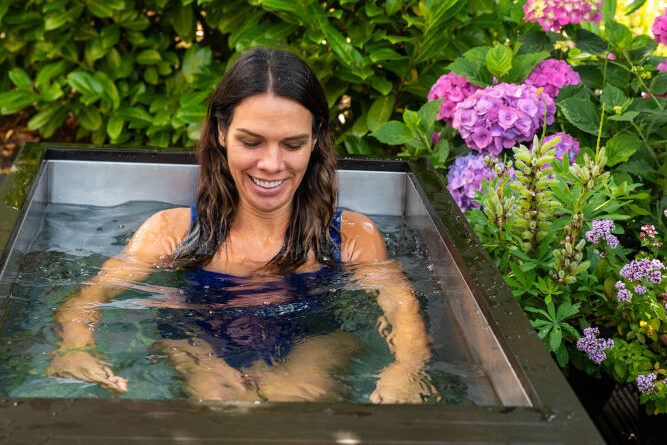
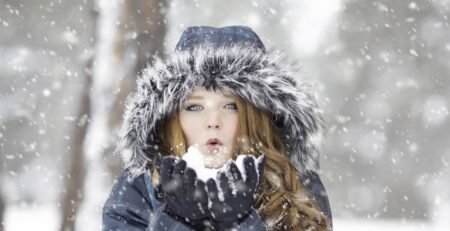

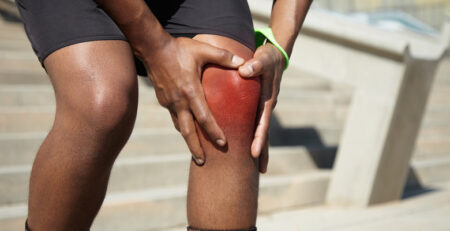


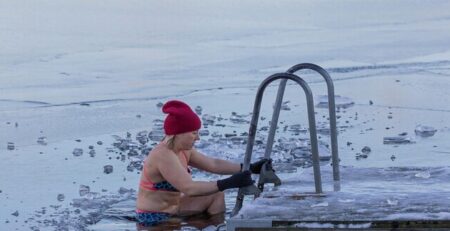


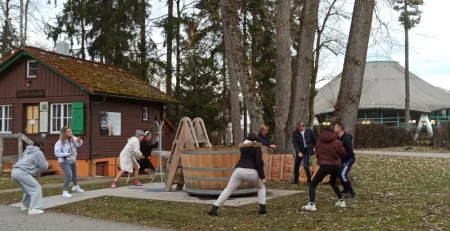
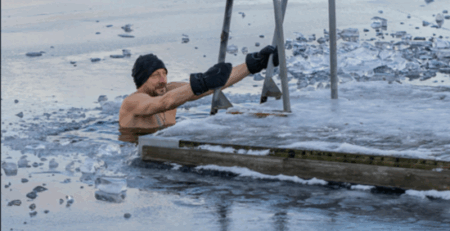
Leave a Reply